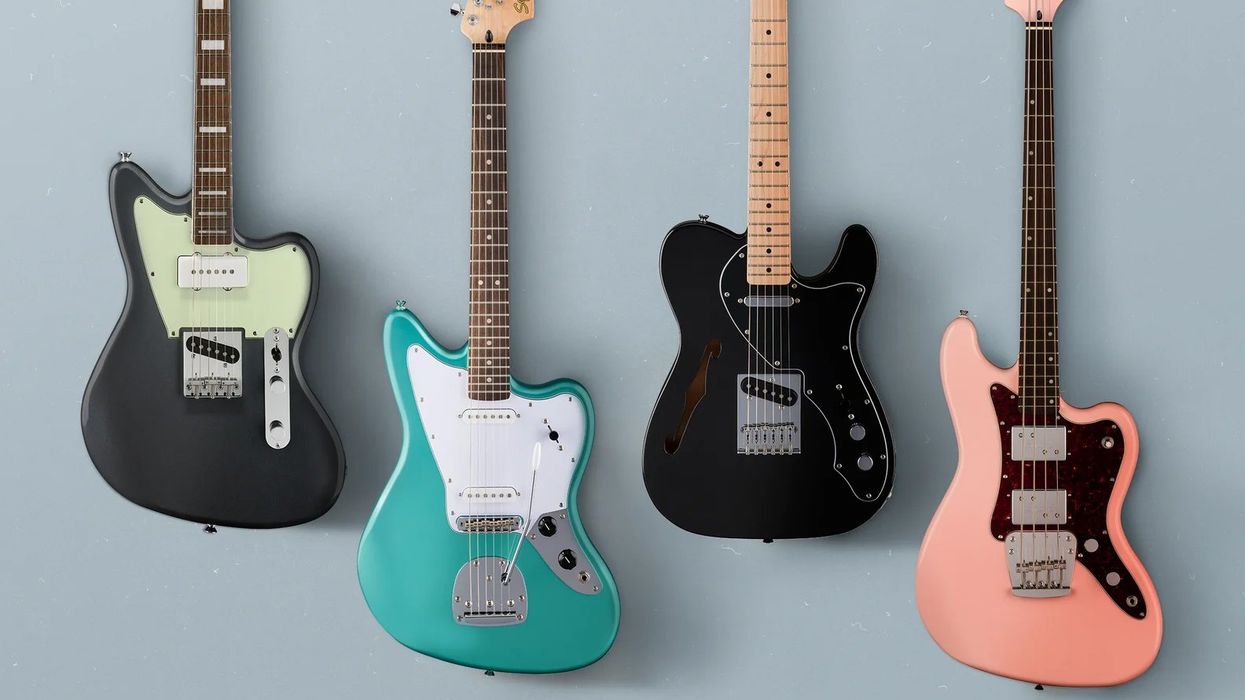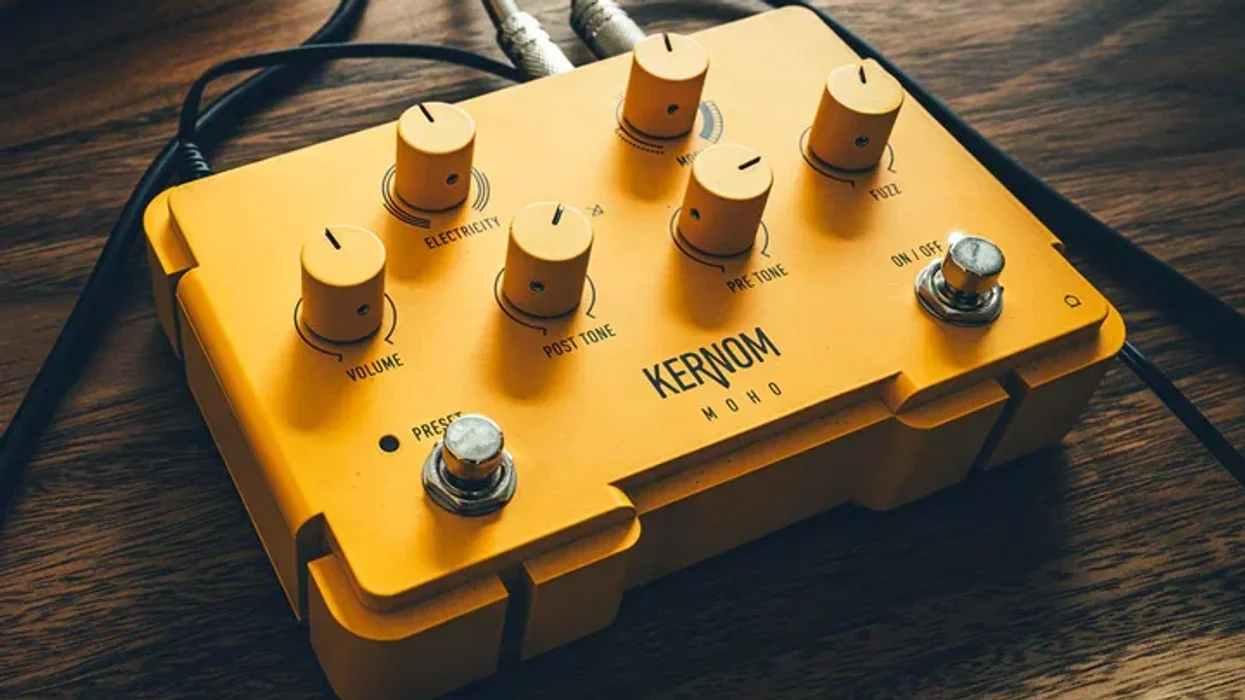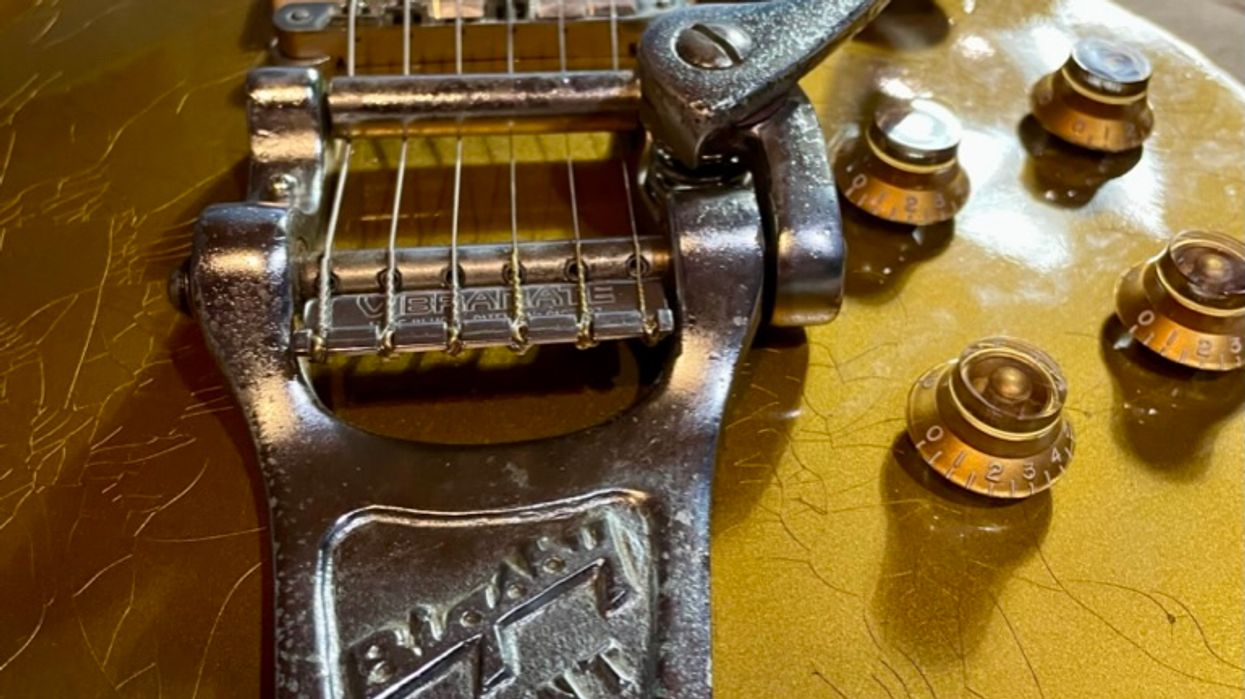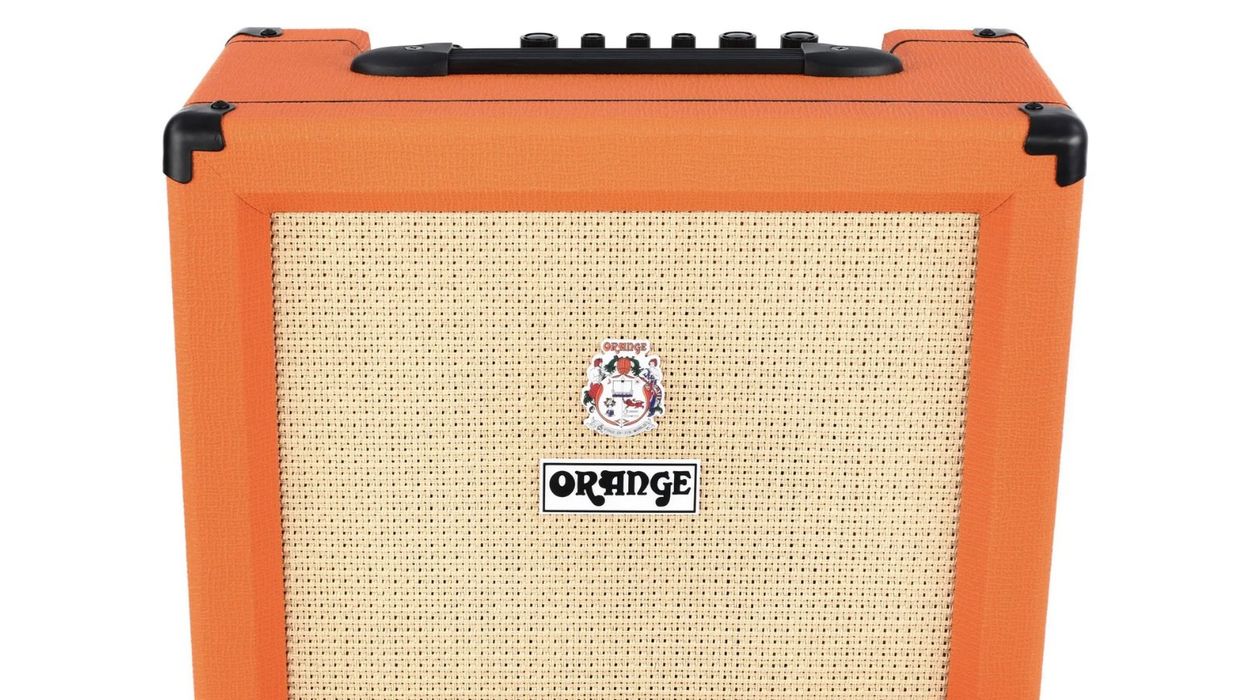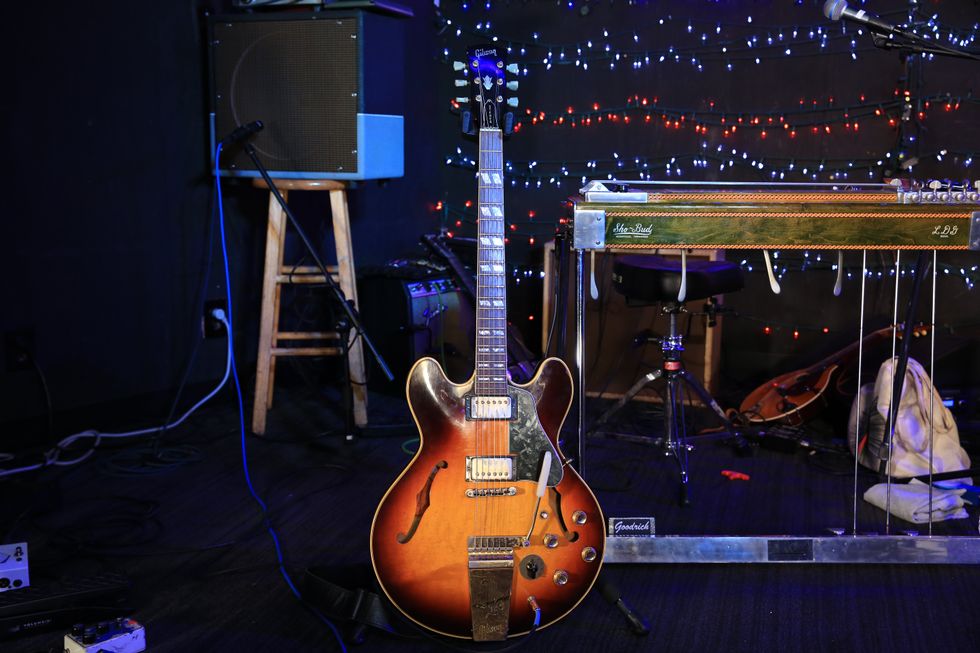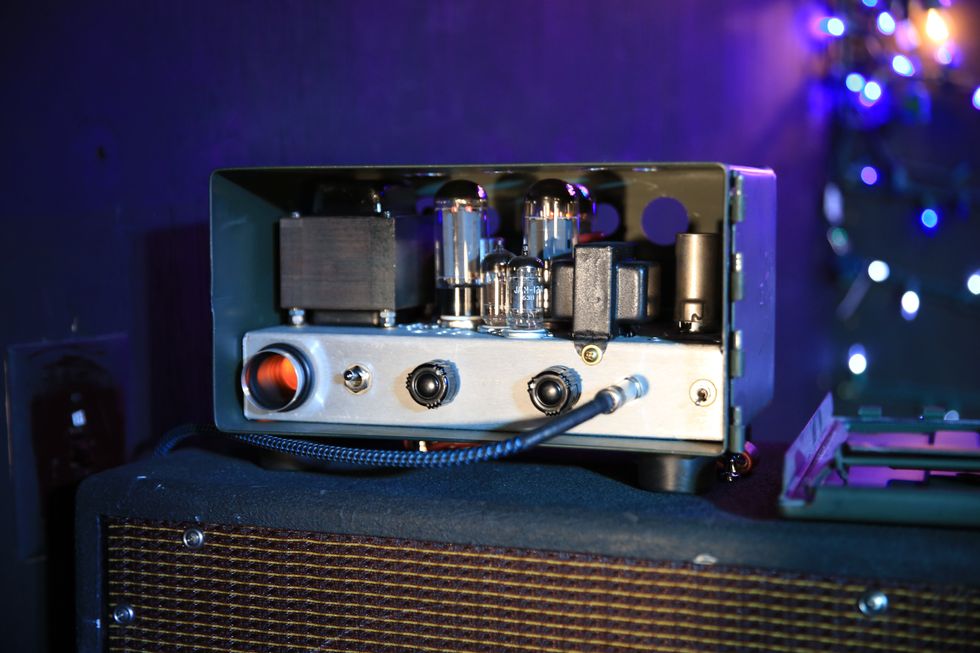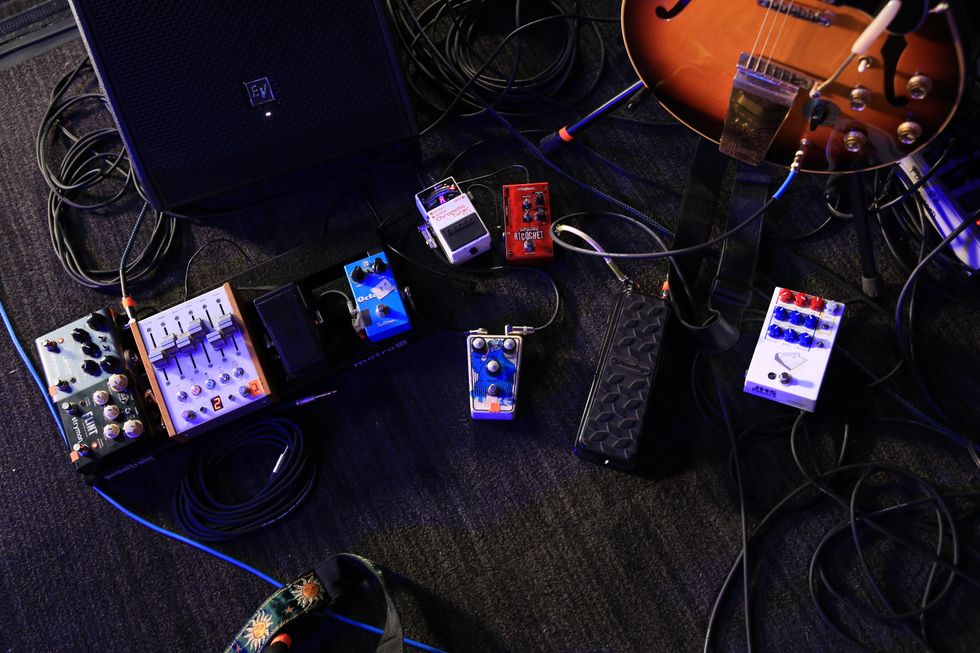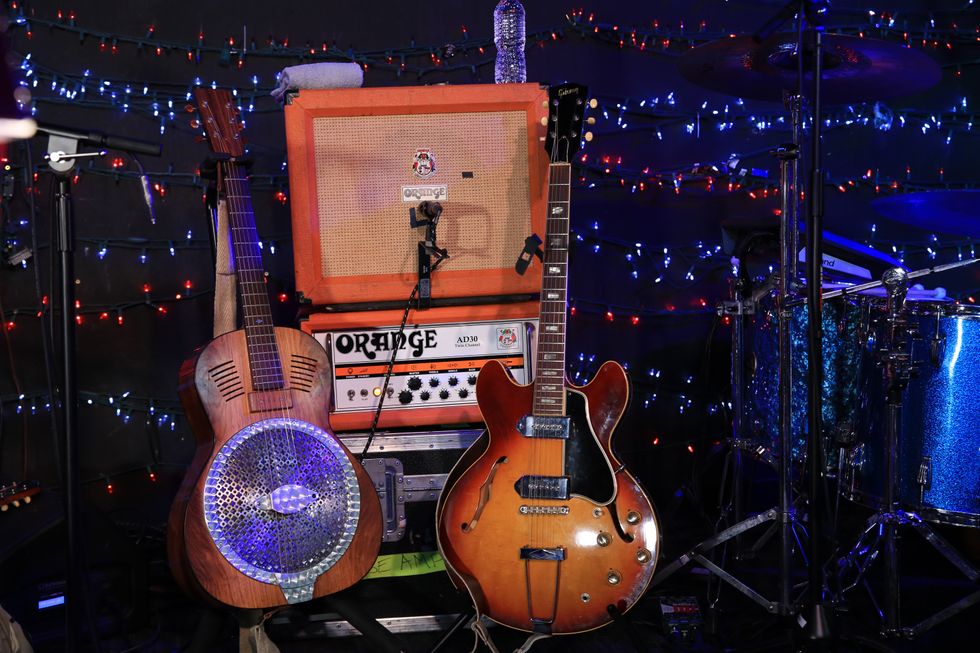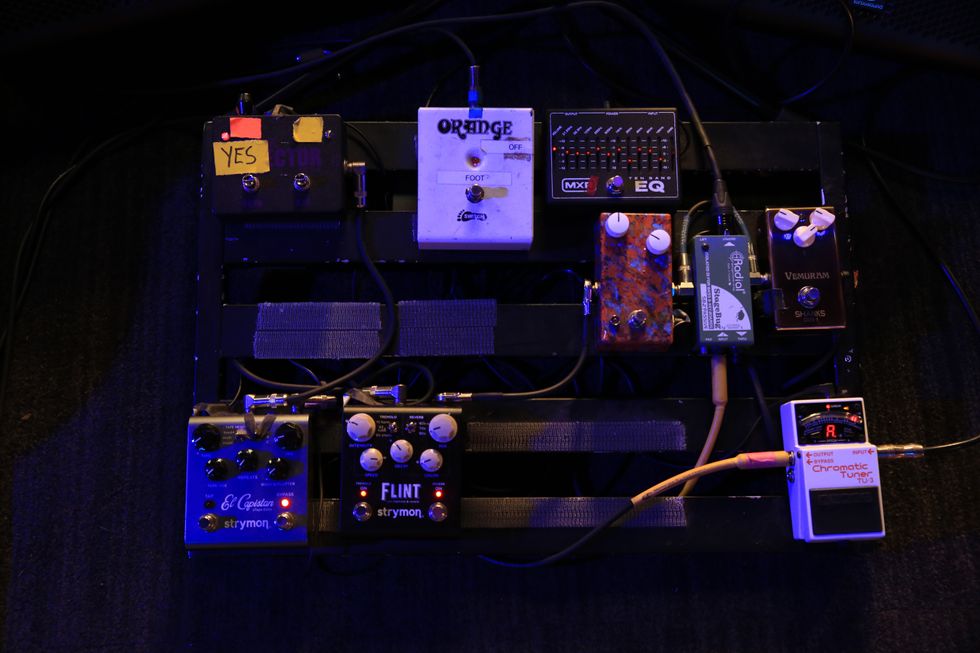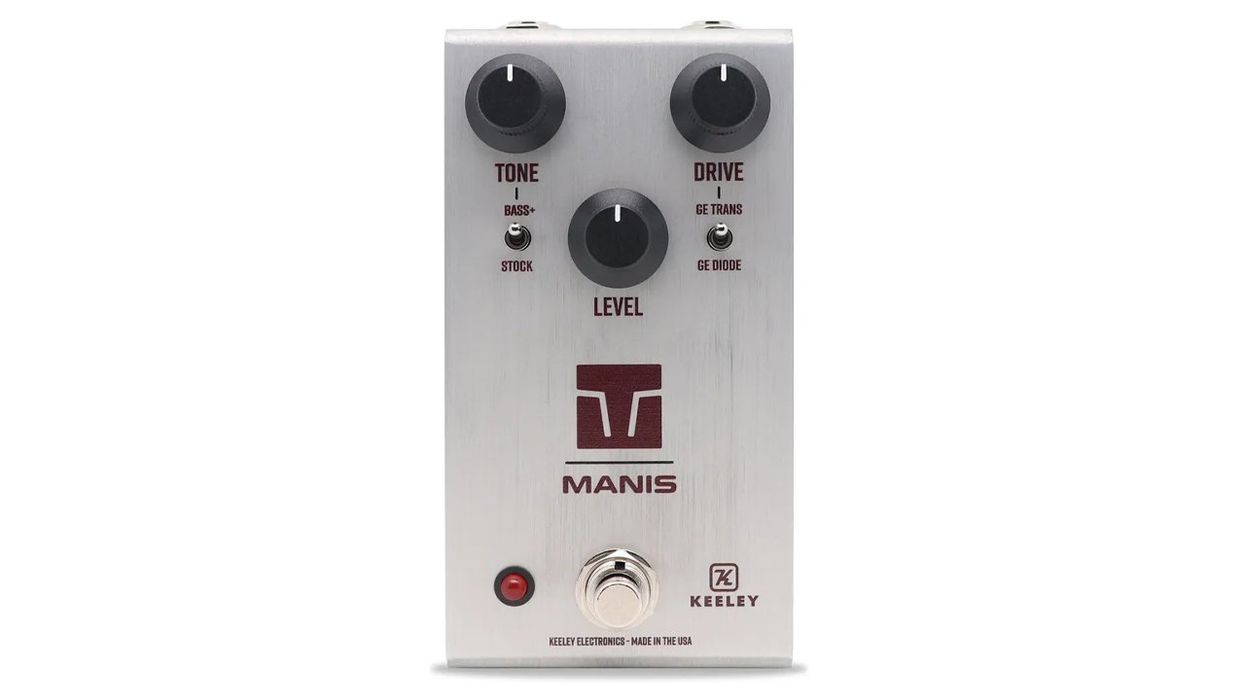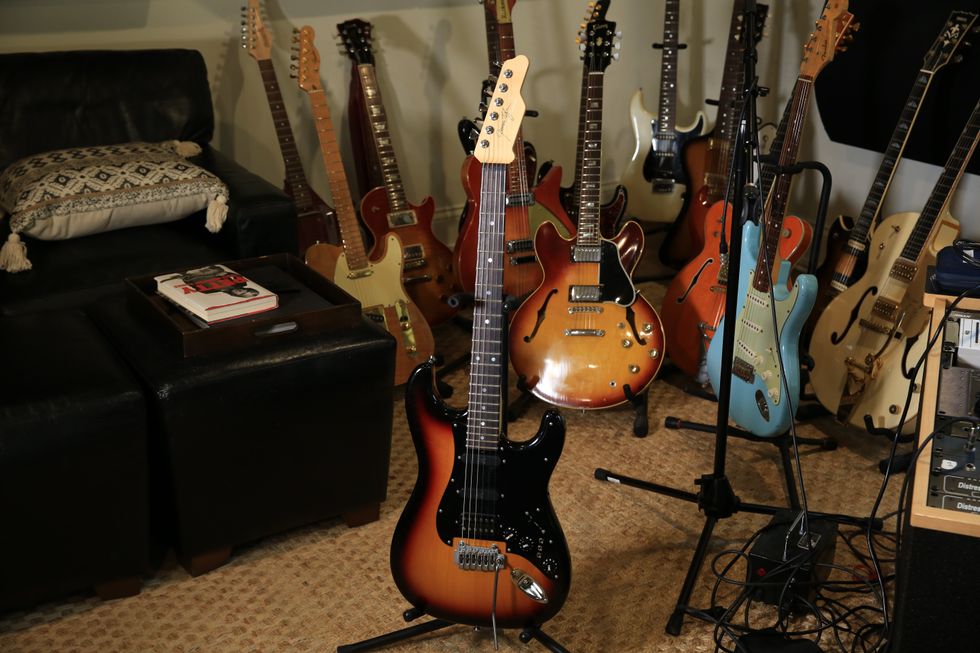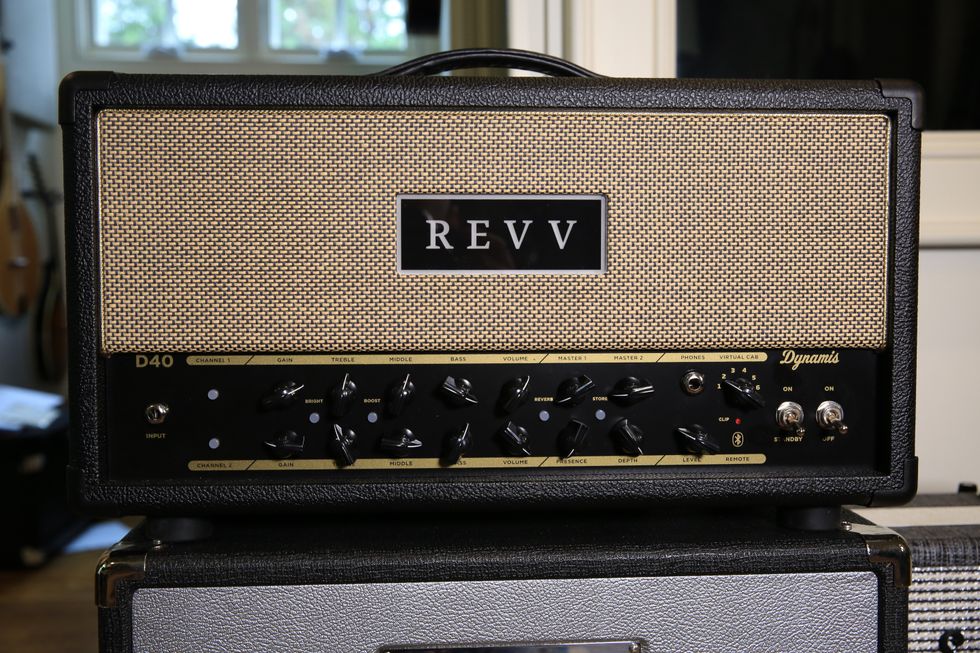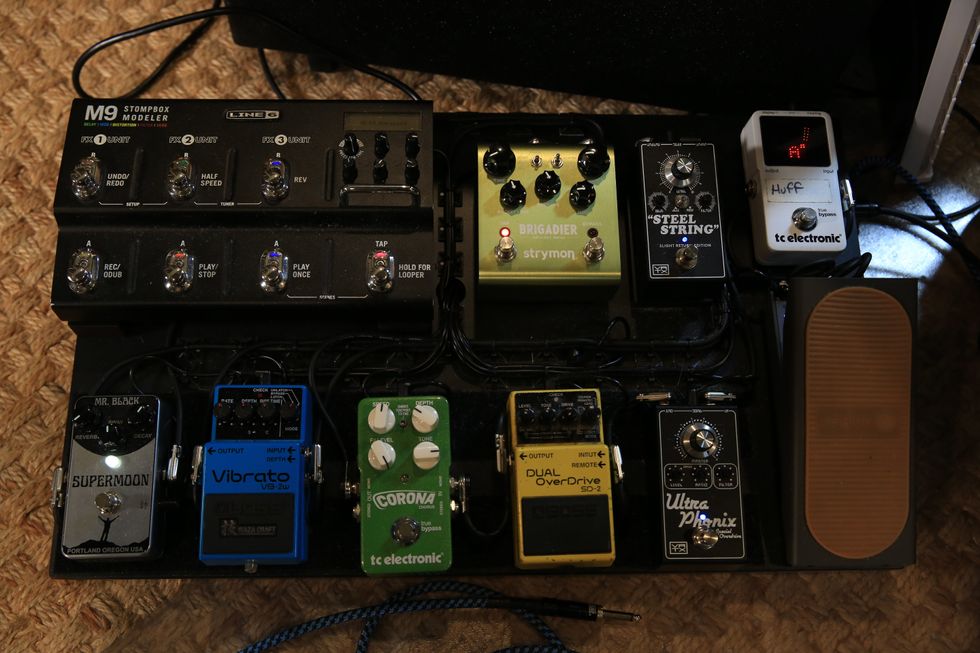The history of guitar is defined by reinvention, and when it comes to getting the geometry of 6-string sonics right, Ralph Novak’s fanned-fret instruments are some of the most beneficially imaginative guitar evolutions of the last three decades.
But at first glance, fanned-fret guitars are not everyone’s cup of tea. To the uninitiated, they can seem unnecessarily odd or even hubristic in comparison to traditional designs. But it’s the science behind this fanning that makes believers out of many skeptics—there’s a method to what may outwardly look like madness. If you look closely, you’ll see that it’s not just the frets that are splayed out in a funky-looking array: Each string’s bridge saddle is also staggered across the face of the instrument in order to conform to careful measurements optimized for that string. In layman’s, terms the objective is to get uniform harmonic content across the fretboard, and the fullest possible frequency range that can be generated from each note. The benefits aren’t all sonic, however. Varying string lengths also contribute to more consistent-feeling tension across each string. Once players get past the initial adjustment in feel, they often remark that the Novax feels easy to play and more in tune across the fretboard.
This year the Novax Fanned-Fret solidbody is 25 years old—an occasion Novak is commemorating with the release of 25 handbuilt anniversary versions of the innovative instrument. In the time I spent with this guitar—which included sharing it with some great players and guitar experts—it was hard to not be struck by what a versatile instrument it is.
Feast of Design
The 25th Anniversary edition Novax is available in two U.S.-made models: the Sassy Annie and our review guitar, the Sweet Annie. Sweet Annie has a mahogany body, maple neck, ebony fretboard, and two hum-cancelling Bartolini soapbar pickups, while Sassy Annie has a swamp-ash body and a choice of three Lollar or Bartolini single-coils.
Thoughtful design is evident everywhere on our test Annie. The tuning machines are situated for straight string pull past the bone nut—a fact that should decrease tuning issues due to reduced friction. The electronics cavities are shielded with copper foil and leave plenty of room for modifications. And the 500k pots, 5-way switch, and .02?F capacitor are all high quality—although the volume pot’s taper felt like it could be a bit more nuanced.
Surprisingly Easy to Know
Unsure about how effectively muscle memory would serve me on the unfamiliar Novax fretboard, I made a point of not looking down as I played. I was surprised how quickly my fingers found their mark, and it wasn’t long before I felt almost totally at home. It may seem wildly counterintuitive, but ultimately the fanned frets felt easier for me to play than a traditional guitar.
Ratings
Pros:
Excellent playability. Big, clear tones. Lightweight. Impressively accurate intonation.
Cons:
Could be more aesthetically pleasing.
Tones:
Playability:
Build/Design:
Value:
Street:
$2,500
Novax 25th Anniversary Sweet Annie
novaxguitars.com
Typically, I play a fairly ordinary Stratocaster through a ’67 Fender Super Reverb. Comparatively, the Novax is louder at the same amp settings, but also much clearer. And though the Annie sounds big, it’s also very controllable and responsive to playing dynamics. Bang on it, and the attack is loud and immediate. Play gently, and notes have a blooming quality. It is also remarkably noise free. The detail and dynamic sensitivity really reward articulation and precision. And the even tone response and output across the fretboard highlights the nuance and detail that come from a sensitive touch. A cool secondary effect of all this clarity is that it makes pedals feel more detailed and full of range, too.
I work in a busy guitar shop (Gary Brawer Guitar & Bass Repair in San Francisco) that sees a lot of traffic from high-profile players. It was fascinating to hear impressions as I gave a few of them a chance to play the Annie. Jerry Harrison (formerly of Talking Heads) enjoyed the ease of playing around the middle of the neck, though he noted that barre chords were awkward at first. Jim Martin (formerly of Faith No More) plugged in Sweet Annie and fell into a fifteen minute, dreamlike flamenco reverie. Gary Brawer, who counts Joe Satriani and Metallica among his clients, remarked on the quality of the fretwork and how effectively the .110" x .057" frets work with the setup. (One interesting aside: The popular PLEK computerized fret-mill system cannot be used with a fanned-fret instrument like the Novax.)
The Verdict
If you’re looking for the slightly out-of-control, teetering-on-feedback sound of a Les Paul through a 50-watt Marshall half-stack, an instrument like the Sweet Annie is probably not your first choice. It’s controlled and precise. It rewards a technical touch. That said, it’s not so civilized that it sounds sterile or innocuous. It’s sonically robust and loud. Most surprising, it’s truly easy to play after a short get-to-know-you period. Indeed, it’s the kind of guitar I could play all night.






